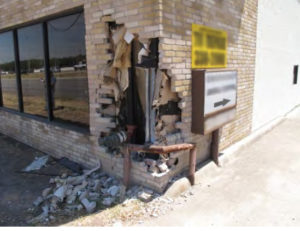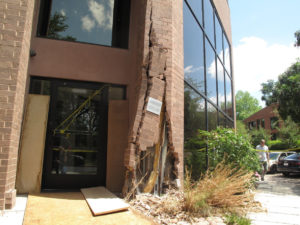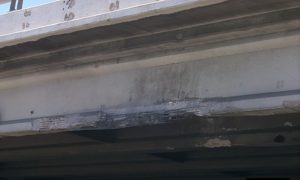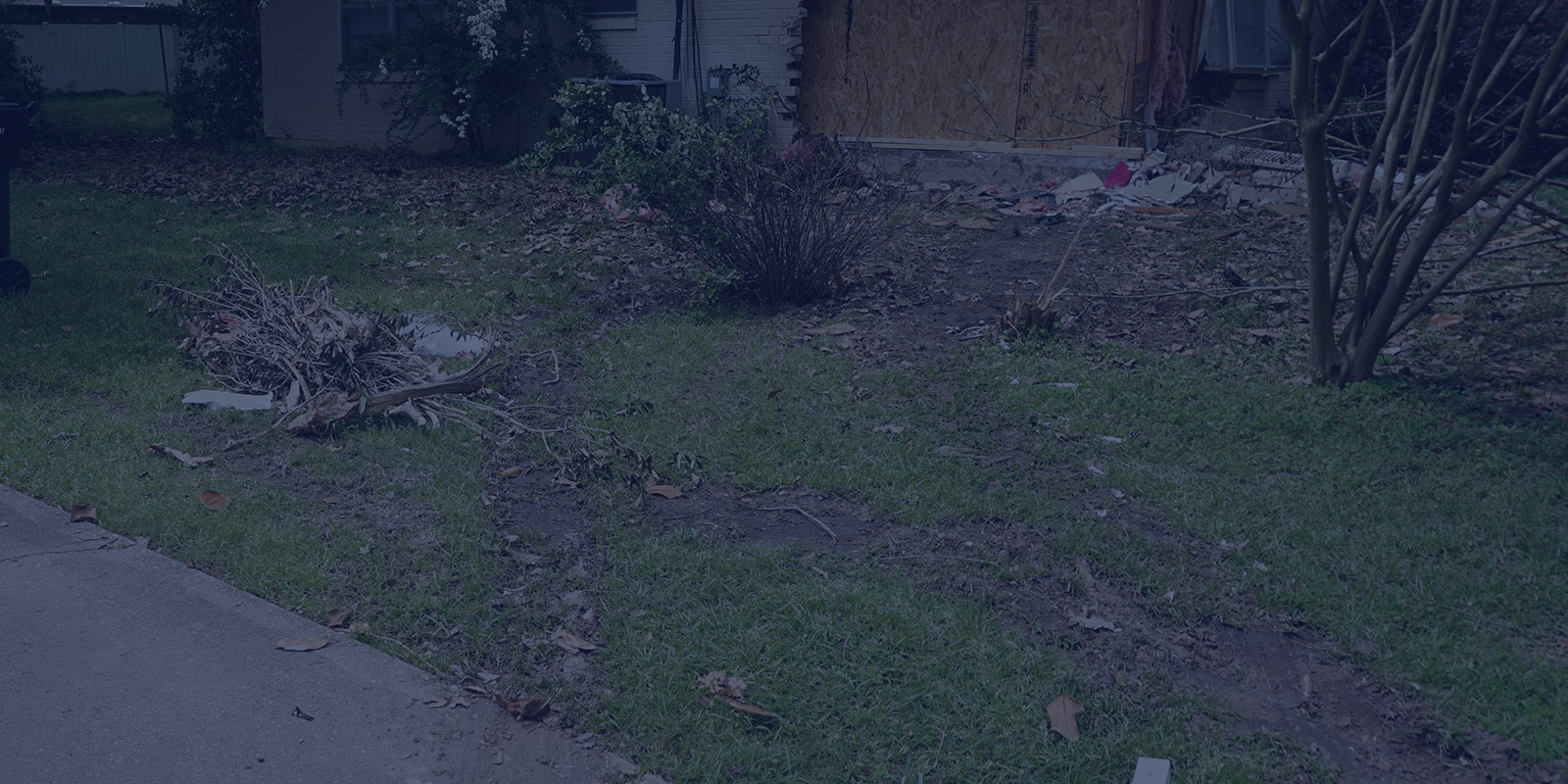A vehicle in motion possesses a significant amount of kinetic energy. When a moving vehicle impacts a building or other stationary structure, the impact event can cause damage to the structure or its components due to transfer of that kinetic energy. The degree of damage resulting from a vehicular impact is a function of the weight and speed of the impacting vehicle and the characteristics of the impacted structure or component. Vehicular impact effects on a building may include damage to exterior walls and elements, damage to at least a portion of the structural system, and damage to interior finishes. Figure 1 shows a building that was impacted at its corner by a passenger vehicle, causing localized damage to the exterior wall and the wall framing. For this building, the primary structural framing was offset from the corner and was not directly impacted. The exterior wall stud framing and wall finishes absorbed the impact before the vehicle could collide with a structural column, significantly limiting the structural damage to the remainder of the building. Also, as can be seen in Figure 1, a fire suppression pipe was present within the impacted area of the exterior wall, and required evaluation due to the impact.

Figure 1. Vehicular impact at a building corner.
Investigation for damage from a vehicular impact requires a thorough review of the impacted structure for patterns of damage. This includes careful evaluation of the area of impact, in addition to observation of finishes and susceptible structural elements at some distance away from the impact. Knowledge of the pre-impact condition of the building to facilitate analytical separation of impact-related distress from pre-existing distress can be exceptionally helpful to the investigator in determining the extent of damage related to the impact. Figure 2 shows the exterior of an office building after a vehicular impact. Due to the nature of the impact and the building framing and geometry, the area affected by this impact was limited.
Figure 3 shows damage from vehicular impact to a busy highway overpass bridge structure caused by over-height freight. Damage assessments of bridges and similar transportation structures are often required to be performed quickly due to the implications of road closure and traffic hazards.
An investigator should also consider the potential for unsafe conditions at a building or structure related to a vehicular impact, and provide the proper warning/notification if unsafe conditions are found to exist.

Figure 2. Damage from vehicular impact to an office building.

Figure 3. Damage to a highway overpass bridge from vehicular impact.
Nelson’s experts have investigated damage due to vehicular impacts at a variety of structures, ranging from private residences to commercial buildings to industrial facilities to highway bridges. Our professionals have extensive experience determining if unsafe conditions exist after a vehicle impact, evaluating the extent of impact-related damage, preparing scopes for remediation of damaged components and systems, and developing cost estimates for remediation.

